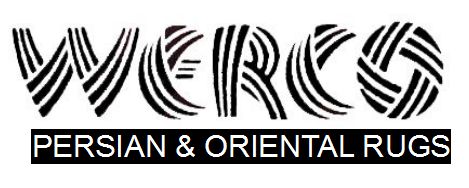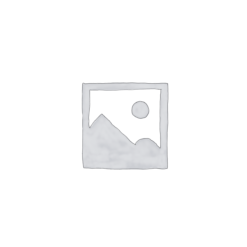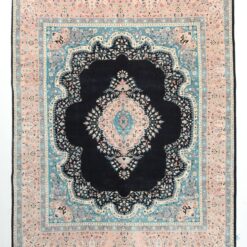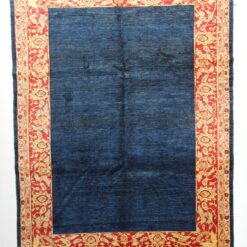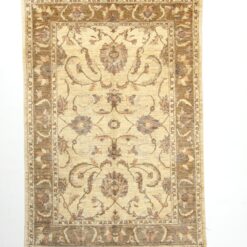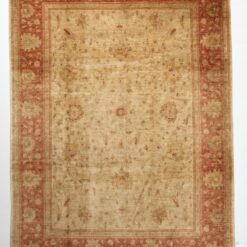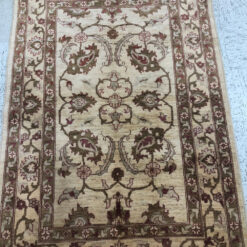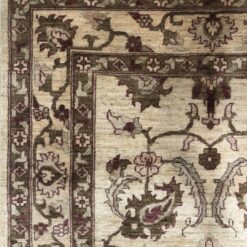The art of weaving developed in the region comprising Pakistan at a time when few other civilizations employed it. Excavations at Moenjodaro and Harappa – ancient cities of the Indus Valley civilization – have established that the inhabitants used spindles and spun a wide variety of weaving materials. Some historians consider that the Indus Valley civilization first developed the use of woven textiles.
Carpet weaving may have been introduced into the area of present-day Pakistan as far back as the eleventh century with the coming of the first Muslim conquerors, the Afghan Ghaznavids and the Ghaurids. It can with more certainty be traced to the beginning of the Mughal Dynasty in the early sixteenth century, when the last successor of Timur, Babur, extended his rule from Kabul, Afghanistan to Dhaka, Bangladesh and founded the Mughal Empire. Under the patronage of the Mughals, local craftsmen adopted Persian techniques and designs. Carpets woven in the Punjab at that time (often called Lahore carpets today) made use of motifs and decorative styles found in Mughal architecture.
During the Mughal period, the carpets made on the South Asia became so famous that demand for them spread abroad. These carpets boasted distinctive designs and high knot densities. Carpets made for the Mughal emperors, including Jahangir and Shah Jahan, were of the finest quality. Under Shah Jahan’s reign, Mughal carpet-weaving took on a new aesthetic and entered its classical phase.
The carpets woven in Lahore were the first to reach European markets, including England, as far back as Seventeenth century. During the British colonial era, prison weaving was established in district and female jails in cities such as Lahore and Karachi. Carpet-weaving outside of jails was revived after the independence when Pakistan’s carpet-weaving industry flourished.
At present, hand-knotted carpets are made by Afghan refugees residing in Pakistan, making carpets and one of the country’s leading export products. Hand-knotted rug manufacture is Pakistan’s second-largest cottage and small industry. The craftsmen have the capacity to produce any type of carpet using all the popular motifs of guls, medallions, paisleys (botehs), traceries, and geometric designs in various combinations.
SKU: 12901
